Powered Up: 1 ⚡ What is Powered Up?
What is Powered Up? The answer is more complex than it may seem at first sight. There is a lot to learn about the platform and everything that can be done with it. This is the first of a series of articles that HispaBrick Magazine will dedicate to explaining everything you need to know about the Powered Up Platform.
A bit of history
When was Powered Up first presented? The most obvious answer may seem to be 2018, with the presentation of the Powered Up hub in the new 60197 Passenger Train and 60198 Cargo Train. But in hindsight Powered Up started all the way back in 2016.
2016: 45300 WeDo 2.0 Core Set

The electronic elements in this set were originally marketed as Power Functions 2 (PF2), and gave us a first look at the new 6-wire cables and connector. The set includes the WeDo hub with the now characteristic green “start” button and a LED. The WeDo hub has 2 ports, and since the set comes with a motor and 2 sensors this opens up the first discussions about why the elements aren’t stackable. As a matter of fact the electronic elements in the set’s predecessor (9580 WeDo Construction Set—2009; “WeDo 1”) were not really stackable either. The connectors on the sensors had a flat top and stacking a sensor on top of a motor (which used the Power Functions plug) yielded no usable result. The electronic elements use auto-IDs to let the hub know what is connected. This allows the programming environment to show what elements are connected to the hub and in turn this is shown in the programming environment.
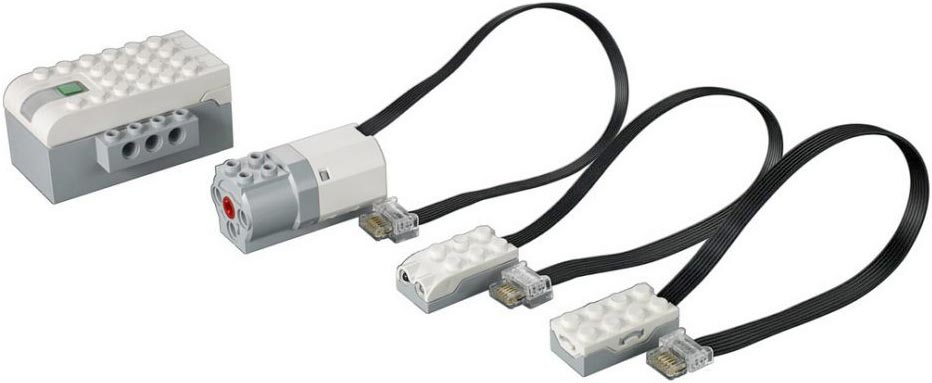
Aside from the fact that the successful “WeDo 1” set was already several years old, LEGO Education needed to stay up to date with the Technological market. More and more schools were changing from laptops to tablets and WeDo 1 requires a USB connection.
Initially very few AFOLs paid much attention to this new product. It is a LEGO Education product after all and not generally available in stores. The new plugs and the fact that they were marketed as PF2 did raise a few eyebrows. With new technology come new challenges. WeDo 2.0 was designed mainly to be used with an app and while Windows support was offered from the beginning, it took a while for users to realise and accept that older Windows versions are not prepared for BLE communication. HispaBrick magazine published an entry on the blog announcing the new product.
You can also read the review I wrote in HispaBrick Magazine 025 (pages 43-46) when the set became available.
2017: 17101 Boost Creative Toolbox

LEGO Boost is a robotics toolkit for the retail market aimed at kids who are too young to be able to use MINDSTORMS but still want to learn how to program their own creations.
Although the why has been partially answered there are several considerations that make Boost easier to use than MINDSTORMS. Boost uses LEGO System bricks (stacking bricks) whereas MINDSTORMS uses LEGO Technic elements. The programming interface for Boost is easier to use and understand in a single glance. MINDSTORMS programming can be a lot more complex (and powerful). What doesn’t change is the fact that there are instructions for multiple models that can be made with a single set. Both MINDSTORMS and Boost come with 5 robot models. Additionally, Boost has a Creative Canvas area with several base models that can be used to make your own walking or driving creations (among other things).
While WeDo 2.0 and Boost share the same plugs, there is as yet no compatibility between the systems, The app for each hub tipe won’t connect to the other hub. The WeDo motor and sensors cannot be used together with Boost nor vice versa. You can read our review of the Boost set in HispaBrick Magazine 028, pages 103-105.
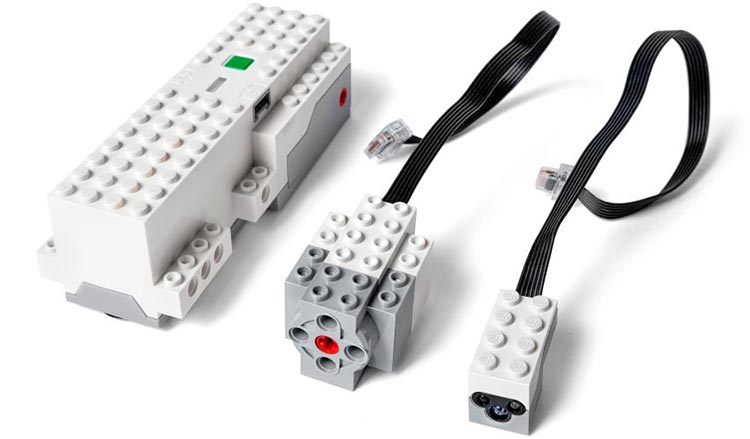
The Boost app is set up in such a way that a child can simply follow the steps to build and program the different models. The programming environment consists of specific programming blocks for each model, but there is also a Creative Canvas provides access to “atomic blocks” the individual programming actions the larger model-specific blocks are built from. This interface is much more powerful than the WeDo interface. It provides feedback on sensors and allows for much more complex programming.
2018: Powered Up Train/Batmobile
A third type of hub called Powered Up is presented. Initially Powered Up appears to be a Train hub, used in 60197 Passenger Train and 60198 Cargo Train, but shortly afterwards the 76112 App Controlled Batmobile is announced.
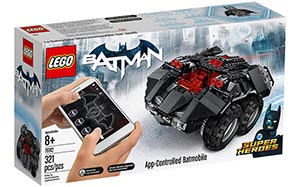
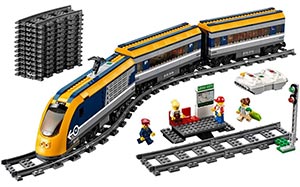
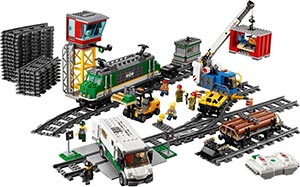
The Powered Up (train) hub fits into trains. A lot of care has been taken to make sure it is the same size as the previous train battery boxes. The added advantage of the BLE chip is that no part of the hub needs to be visible for the remote (or the app) to connect to the hub.
In addition to the hub, the trains come with a physical remote. The remote has the same start/connect button as the hubs (WeDo, Boost, Powered Up) as well as two sets of control buttons (+, STOP and -) that can be rotated according to the needs/likes of the user.

The Batmobile comes without a physical remote and needs to be controlled from a smart device (phone or tablet) running iOS or Android. The Batmobile section of the app has a few basic programming functions (e.g. to change the sounds and move pattern controlled by some of the buttons in the app interface) with a visual style that is very similar to the one used in the Boost app. However, the programming options are very basic at this time.
The Powered Up motor is the same as the one that comes in the WeDo set. While no official support for electronic elements from other LEGO sets is announced, the fact that Powered Up uses the same plug as WeDo 2.0 and Boost soon has AFOLs testing what combinations may work. The app only supports the Simple Medium Linear Motor, the train motor and LED Lights, but the remote appear capable of making the Medium Linear Motor (from the Boost set) work although only to switch it on.
2018: 45025 DUPLO Coding Express
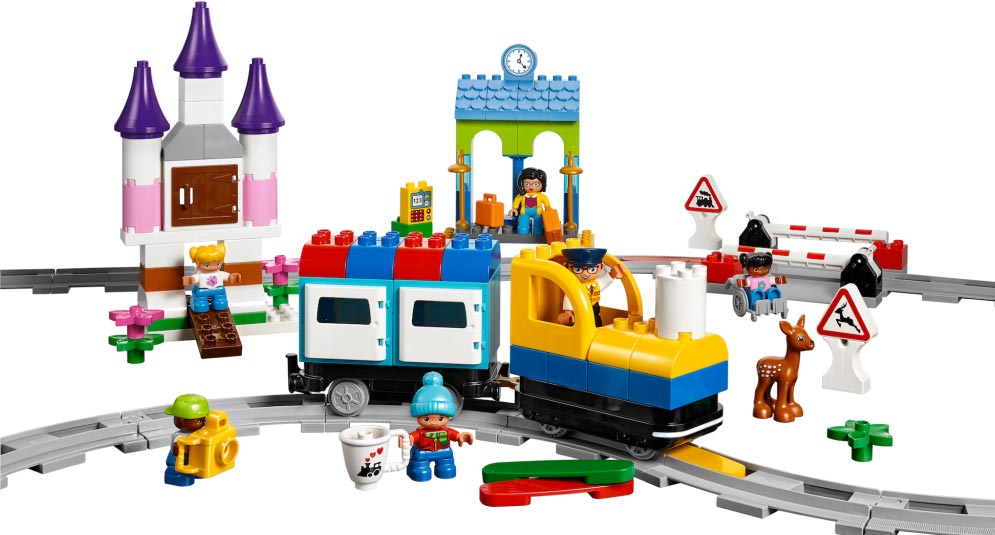
Another LEGO set controlled by BLE was launched by LEGO Education in 2018. The DUPLO coding Express set is designed to allow children from age 2 to build and program their own train. The train has a motor/hub base that includes a LED and a speaker. While Coding Express uses the same communication protocol it cannot physically interface with any of the electronic element from WeDo 2.02.0 , Boost or Powered Up.
2018: LEGO BLE Wireless Protocol
Later in the year, LEGO releases the LEGO BLE Wireless Protocol on GitHub.
For the first time it becomes clear that all the elements that have been released so far should be able to work together and a number of AFOLs jump at the opportunity to create their own programs and apps to try and do just that.
2019: Powered Up app update
In April 2019 LEGO releases an update to the Powered Up app that opens up a world of possibilities. In addition to the direct control modes for the two trains and the Batmobile, there is now a new section where you can program the Powered Up “Train” Hub (rebranded (“Hub”) as well as the Boost Hub (rebranded “Move Hub”). The app comes with a firmware update for the Hub, allowing it to work with all the previously released motors and sensors (WeDo 2.0 and Boost). It also allows you to program the Move Hub (Boost), but since no firmware update for Boost has been launched yet the Move Hub will not (yet) accept the WeDo sensors.
Around this time LEGO stops using the name “Power Functions 2” to refer to the electronic platform and starts calling it “Powered Up”. This generates some confusion as the Hub (used in City trains and the Batmobile) was referred to as “the Powered Up hub”, but it does provide a clearer understanding of what LEGO is aiming at. All the current platforms are part of a single platform and should (eventually) work together as a single Powered Up system.
Even though different names are used for certain elements, they are all part of the Powered Up family
*The WeDo hub has no firmware update capability and operates on 3V (as opposed to 7.2-9V for the rest of the Powered Up hubs) so the WeDo hub will not be able to work with other motors or sensors.
Future products
There are a number of new additions to the Powered Up family coming out this year:
LEGO Technic will launch its own expression of the Powered Up platform in the sets that will be released in the second half of the year. Technic will use the name Connect+ for its components. The Connect+ Hub will use 6 AA batteries and have 4 ports. It will likely have an internal tilt or gyro sensor (like the Boost Hub) capable of detecting the inclination of the hub. Connect+ will have 2 new motors with encoders.
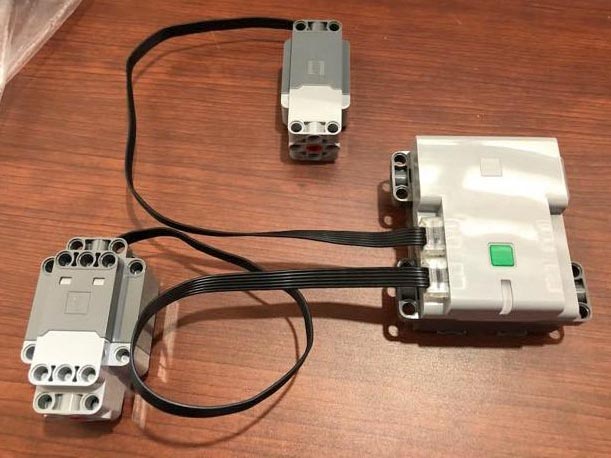
The 75253 Star Wars Boost Droid Commander set will launch globally on September 1, 2019. The set doesn’t include any new electronic elements, but it will come with a specific app with building and programming instructions. This will likely include a firmware update that should also make it possible to use the WeDo sensors with any updated Move Hub (Boost Hub).
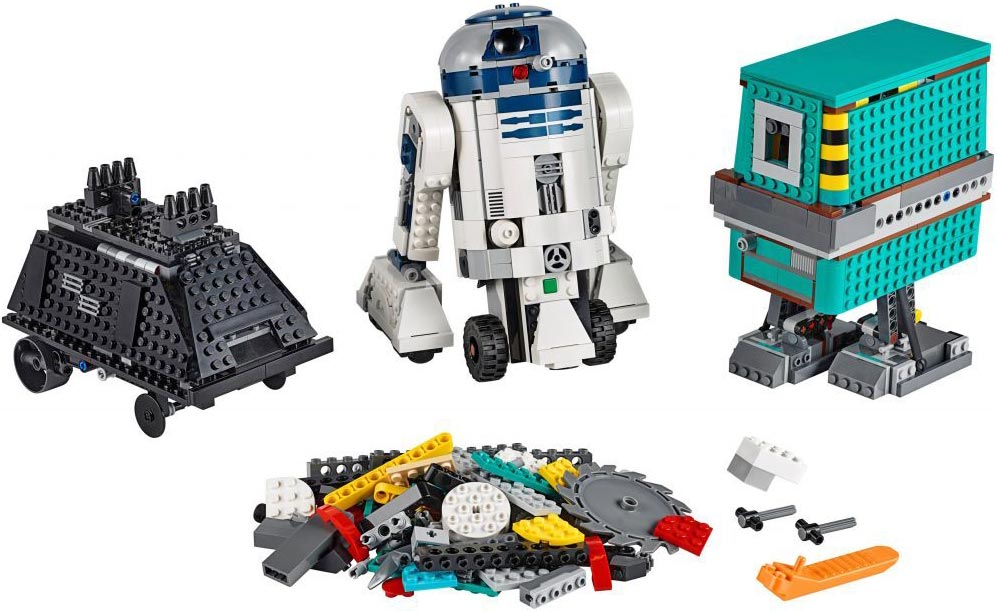
LEGO Education has a new robotics platform, SPIKE Prime, that will officially launch in August. The SPIKE hub has 6 ports, a speaker and 5 buttons. Contrary to MINDSTORMS pBricks, the SPIKE hub has no screen. Instead it has a 5x5 array of LED lights. The set will come with 2 new types of motors with encoders. Interestingly the SPIKE Prime motors are marketed as “Technic Large Angular Motor” and “Technic Medium Angular Motor”, another hint at the fact that eventually all the electronic elements in the Powered Up universe should work together.
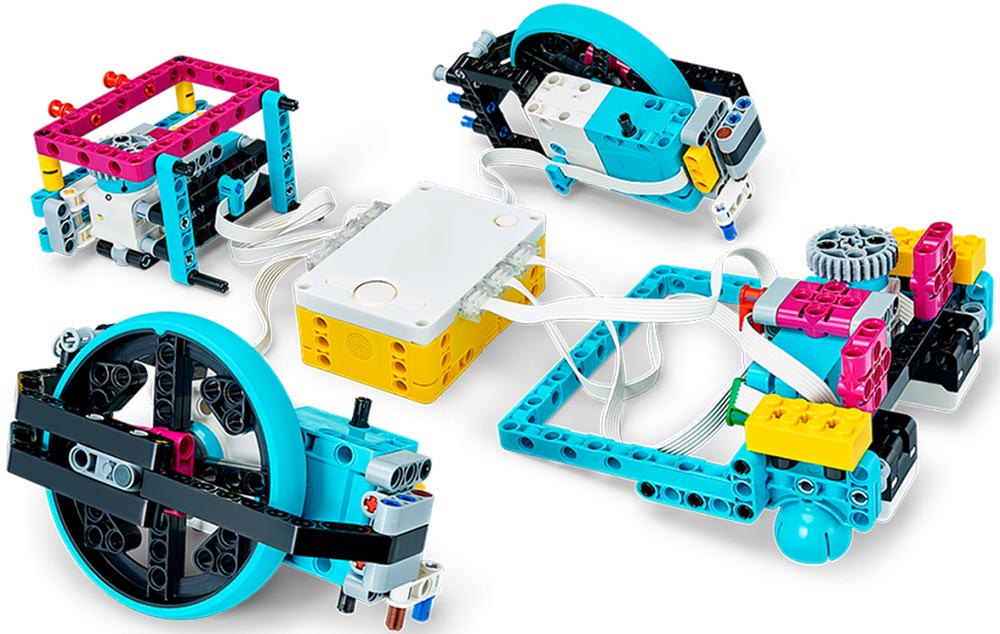
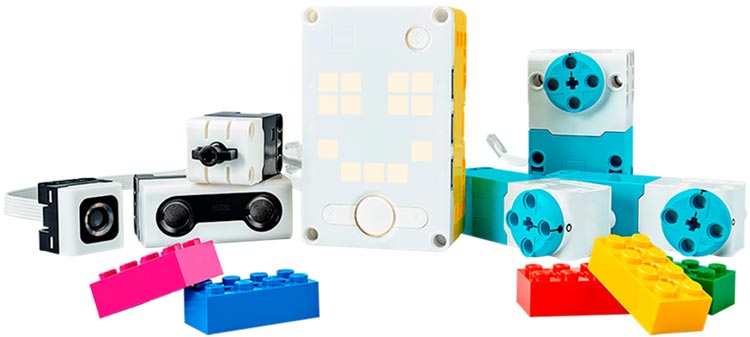
More on these future products in later installments of this series…
7531